Post Hurricane Helene - Rebuilding and Recovery - Part 3
- Scott Linwell
- Aug 3
- 9 min read
Updated: Oct 19
PART 3 OF 3
PLANNING AND RECOVERY
Joey and I have a strong sense of determination, and that part of us immediately kicked in once we were finally able to reach our place after the storm. While what we saw was so immense in scale, and the work in front of us so looming, we knew we couldn’t get bogged down in despair. We are naturally project oriented and we aren’t afraid of work, so we dove in, first night back after making it in to our place, and began figuring out what we had to do next. We work together well, we plan well, and we knew that part of us was about to be put to the biggest test yet.
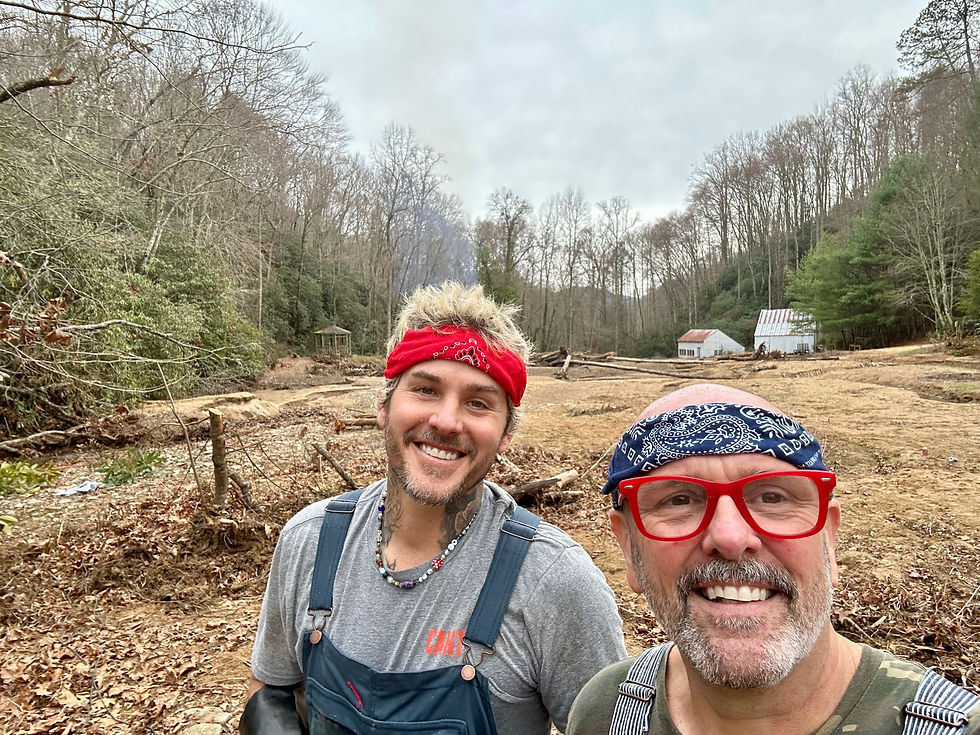
Over the next couple weeks we drove up often. Not every day as we had before, giving ourselves a bit of time to recover and digest what we'd found, but also to make plans, make phone calls, and get to the business part of everything. I applied to FEMA for assistance and lined up our insurance to come out and see what they would cover. Joey buried himself online to find out how to rebuild and properly install culverts, what size pipes we'd need, how deep to set them, how to secure them so we could get access restored to our place. He called and lined up contractors, not an easy task in an area awash with more work than folks available to do it.
We would head up about every other day, or third day, access to our area slowly opening up and becoming easier as temporary bridges were built along the route and roads slowly cleared to at least one lane. We’d bring supplies in like before, but less and less as the needs of the shelters we were helping supply were being taken care of by relief agencies - plus the goodwill of those sending goods or bringing them in as we had created spaces filled to the brim.
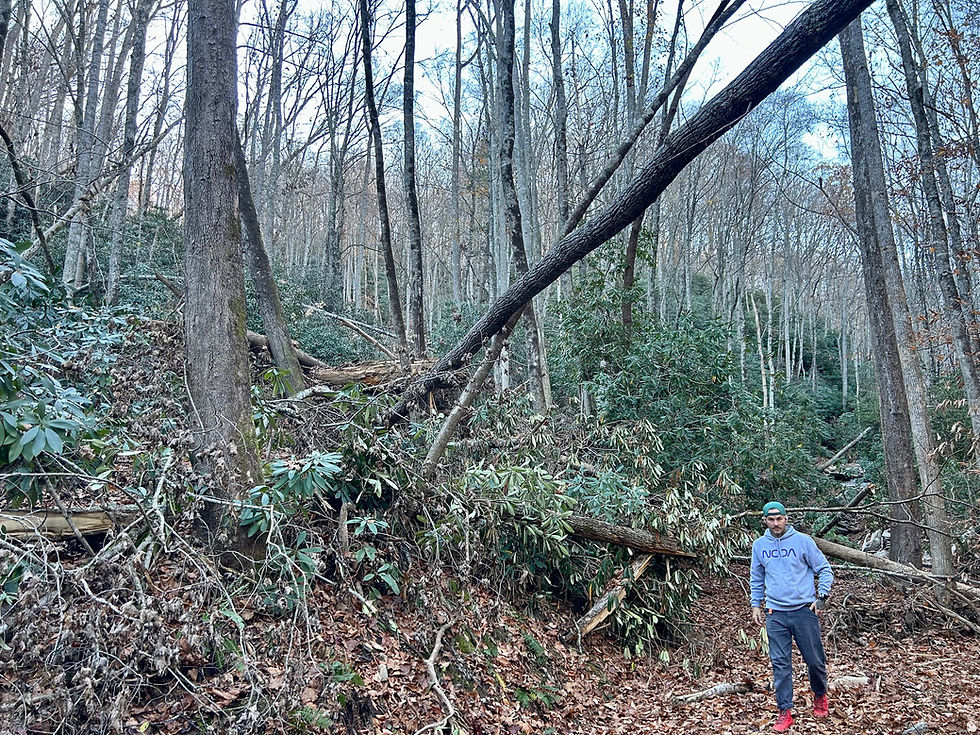
We would visit our place and take more photos to consult when we were back in Charlotte planning our rebuilding & recovery or to send to FEMA. We realized the pond was just too far gone, even though there was still a good bit of standing water at the far end. Instead of trying to recreate the pond, which wasn’t natural to begin with, we dug another deeper breach and drained it. We formulated plans to rebuild our gardens, this time on the flat spot where the pond had been. A bigger and better garden.

As the triage phase of recovery slowly began to give way to rebuilding, and we were less needed for supplies and assistance, we were able to focus on our place. We found a contractor who could install our culvert and grade & rebuild driveway, big work we couldn’t do ourselves without big equipment. Once he did his part we could finish the project by hand, securing everything with soil and stacking the tons of rocks we'd been left with.
We bought and brought up, with the help of a friend and a large trailer, the large pipes to be installed. Access in was first priority. Once we had that access the same contractor could reintall our septic system. Electric service to our place was still a few weeks away, but once Duke Energy made it to our area we needed to be ready, they'd need to be able to get in to re-run the lines. Once electric service was on the well would work. Step by step, little by little. Then, once we could live there again we could work on the debris piles. We didn't have a set schedule, so many of these variables were out of our control, but we'd be ready.
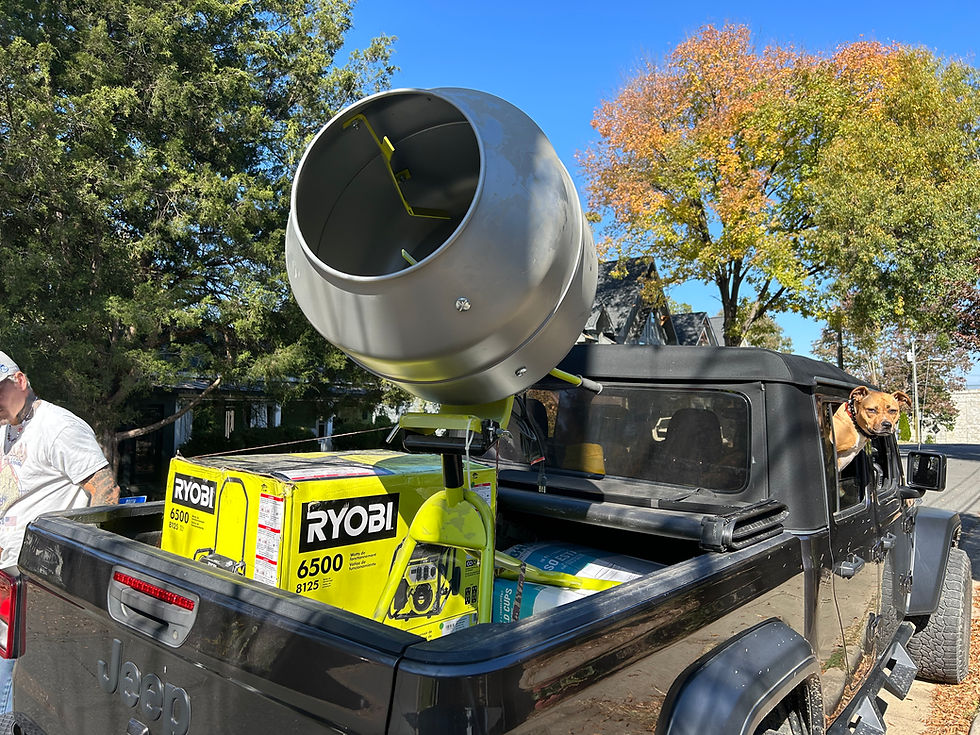
Once the pipes were in place we were set to finish the job. We bought a generator and a concrete mixer to stack and set stones for the parapet walls where the water would hit as it entered the pipes. Next stacking more stones around the edges of the drive to secure the gravel we'd need to bring in. We'd move and arrange rocks & stones at the edges of the new creekbed as well, to try and keep it from any further erosion. Finally we'd add more rocks at the top of the culvert for fuctional & decorative knee walls.
It was hard work, backbreaking work, but we were thrilled to be doing it. Sitting at home and longing for progress just isn't how we are wired. We needed to feel like we were doing something, every day. We knew we had a mountain of work in front of us, but our day to day focus was one project, one part, at a time. Joey always said that we were just “chipping away”. Something I need to hear often. Looking at our place in its’ entirety was too much, looking at a small part, a daily goal, much more motivating. I have to admit he pushed me, somehow not seeing anything we had in front of us as "too much". He'd dive right in, dismantling debris piles head high, one stick at a time. So I'd follow.
Our relationship, our partnership, has always worked this way. Each of us with our strengths and weaknesses, leaning on each other as needed. In times like this we become even more tuned in to each other, more unified.
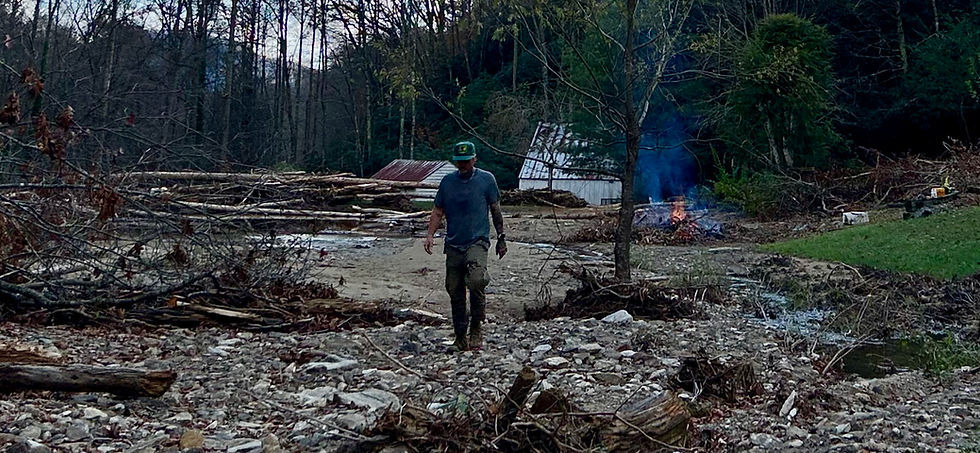

We were essentially camping in our place as we worked. We didn’t have electricity (and wouldn’t until after Thanksgiving, late November) but we had shelter. We brought in water, bathed in the stream, cooked on the grill and tended to our wounded land. We slowly began to see progress, scars where there had been cuts.
Part of our vision was to rebuild better. Those tons of rocks? Tractor trailer loads if we were to buy them, were perfect to use to not only secure access, but to make it beautiful. We’ve done lots of stonework before, every home we’ve lived in actually, so if we were going to do this, we were going to do it right - from the start. We wanted our place to look like you were entering a national park.

Joey and Scott - rebuilding Linwell Falls at Rush Creek after Hurricane Helene
We’d always found our entrance to be beautiful, Rush Creek had run beside our driveway, turned under it, and then up and through our property. The new route of the stream altered that entrance a bit, but it had also created two gorgeous waterfalls and bookended our culvert and access point. Adding the stacked stone, including small knee walls at both sides, punctuated the natural beauty.
Trees that had fallen, or had stood in the way of the new road being created beside us, had been cut up into huge logs and left behind. We rolled them in and utilized those as a border to our driveway. They'd look great now, and as they aged and decomposed over the next few years they'd become covered in moss and small plants, growing ever more beautiful year after year.
We found cool or unique stones, ones with unusual shapes, and placed them with care in special spots. Though everywhere around us showed the scars of the storm and the remnants of Helenes fury, when we drove up to our place we could see the potential for newfound beauty as we crossed over. As we came to see it, we'd been provided with resources we'd never have been able to buy or collect, and we'd take complete advantage of that.

We'd also come to appreciate the beauty that had been left behind as well. It wasn't easy at first, it felt wrong to actaully see any beauty in the aftermath of the storm, almost as if that would violate the real tragedy all around us and in our communities, but the fact is there was beauty. Rush Creek behind us had always had waterfalls, it's why we call our place Linwell Falls at Rush Creek, and they were now bigger and more beautiful than before. At the bottom of a couple of them the water had deepened pools, leaving large swimming holes deep enough to jump into.
Once access was established and our culvert was complete, we hired the same contractor to rebuild our septic system and grade the hill that had been gutted out. He did the heavy work we couldn’t do, moving soil, trees, boulders and debris, slowly reshaping our field and meadow. Not quite the same, we’d lost so much soil, but not the ugly crater that had been greeting us every time we drove in.
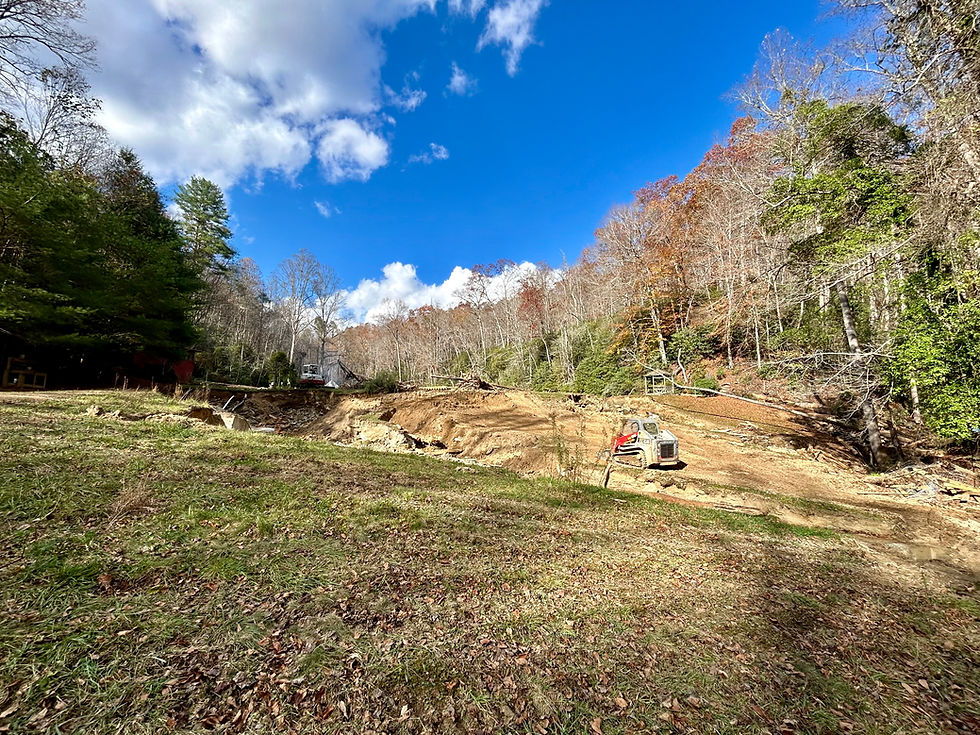
The pond had finally fully drained, leaving small mountains of debris at it’s edges. We spent the better part of late December and most of January clearing these areas, slowly burning the piles, stick by stick, branch by branch, piling those smaller parts onto the larger trunks and root balls to help burn them away. The wood was green, these had been tall living trees at the edges of the steams way up the mountain, so they burned slowly. We didn’t mind the pace. We’d come to terms that this was going to be long and hard work, and we chose to take our time - though that still meant work every day, we didn’t set deadlines for ourselves.

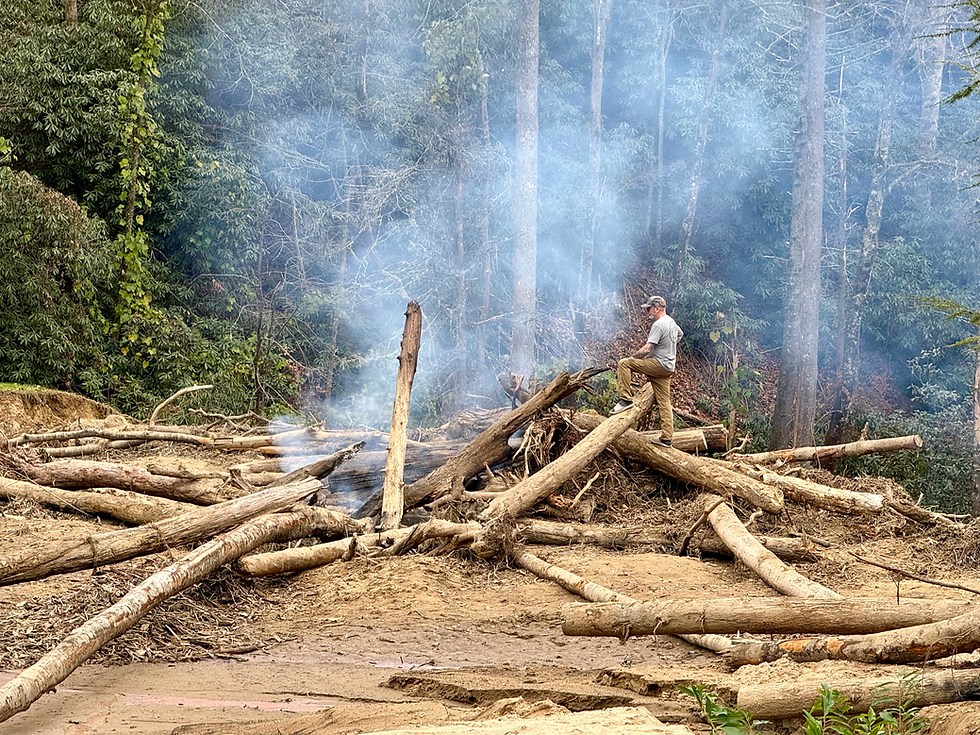
The burning process was actually a bit cathartic. We could look back, every day, and see less and less of the destruction. We’d watch the embers flicker after dark from our deck, sparks flying into the air occasionally as a larger piece would fall into the coals as the ones below it would collapse. Each morning we’d wake up, have coffee and get back to work, turning those same embers, now down to the ground, pushing the remaining parts back over them reigniting the flames for another days work.

Most of this part of our work was in January, when temperatures were in the 20’s at night and 40’s during the day. We didn’t mind the heat from our work, both from our bodies and from the flames. I remember a couple days, almost magical, when it would snow as we worked, softly falling on us as we pushed, pulled and manipulated huge logs to our brush piles. The snow would blanket the ground, hiding much of the damage from the storm for a day or two, concealing the mud and muck, letting us see what everything could look like once our work was done.

The more we'd clean up, the less debris in our sights, the more we'd design and shape our plans. There was a small side stream separating what was the pond (and soon to be our garden) from what had been the dam that created the pond. We decided that the far side, where the dam had been, would be another garden. One filled with native plants and wildflowers, a pollenator and butterfly garden, with a twist to remind us of these days and how the garden was created. We'd keep the gnarled rootballs, the stumps, and the interesting larger branches, finding spots for them and planting all around. Natural sculptures of wood, twisted or gnarled, burnt ends on some from the fires. Our Stump Garden. We lined pathways through that garden with stones, finished with a gravel top coat.


We shoveled and raked the dunes in the soon-to-be garden, leveling out the sand and silt, and built beds with river stone and logs. We utilized the natural supplies around us to create a garden that wouldn't just feed our appetites, but our souls as well. A place to enjoy just to be in. We've done this over the years, actually, at a few places where we've lived, including a couple spaces featured on local (Charlotte) and national magazines. This would be the most beautiful one yet.
We found smaller fallen trees, cut them to size, and built a new compost bin.
We did the same with a couple more small fallen trees, plus some of the white oak from our former garden beds, collected from downstream, and built a little bridge between the two gardens.

We brought in soil to fill our new beds. The sand would be a decent start to a garden, but low in nutrients. That said, it would be great for root vegetables, something we'd not had a lot of luck with in the past.
After months of hard work we found ourselves back where we'd been a year earlier: planting a new garden. I couldn't have believed this would be possible so soon, that day at the beginning of October, the day we first set eyes on our new post-Helene environment. The fact that we were able to not just plant a garden, but a full garden, in an amazing and beautiful setting, early enough for spring veggies, wasn't lost on us. We were amazed. We were exhilerated. We were proud. We were also exhausted. We'd each lost about 20 pounds. We called it Hurricane Crossfit. We were ready to slow down and enjoy our place again.
While there are still plenty of projects left all over our land, we are happy to leave them be for now. Trails can be recut later. Remnants of debris that aren't in the way are fine where they are, we'll get to them soon enough. The old cabin is still waiting to be removed, sitting as it has since the storm. We don't see these blemishes as we walk Lottie Dottie across our fields, letting her sprint and scurry between the plants, trees and flowers we've put in place. It's beautiful here and we aren't afraid of the rain any longer. We made it through, stronger, happier, and even more connected to our place. Wait till you see what we have in store next!
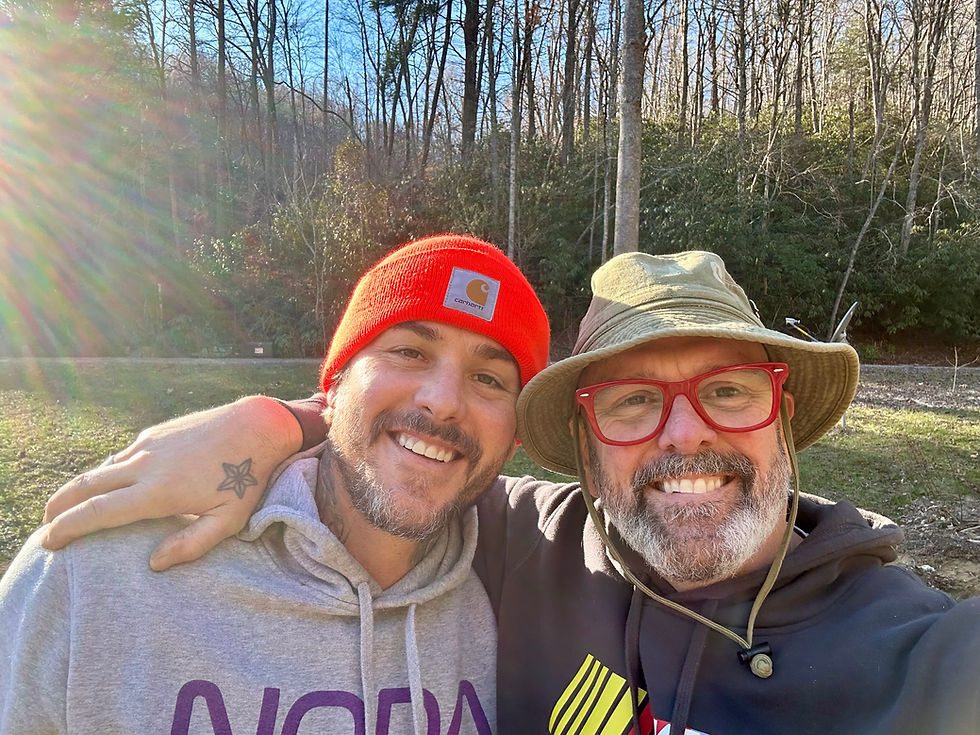
Hurricane Helene rebuilding
Joey and Scott Linwell falls farms the Linwells Hurricane Helene impacted areas Black Mountain Asheville










































































































































































































































































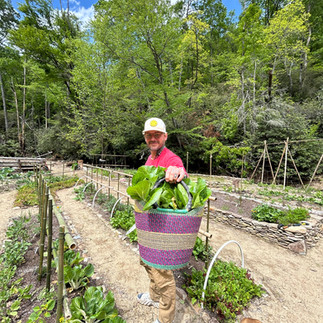

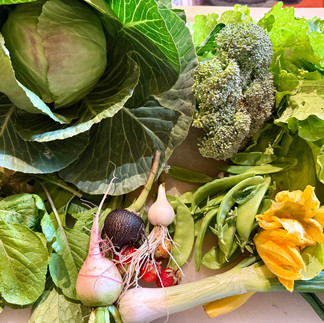


























Great story and love all the creative energy of you two. Yes, a hell of a lot of resilience! The result of all your efforts really looks fantastic.